Table of contents
Black mustard ( Brassica nigra) is used in folk medicine in the form of mustard compresses. In the kitchen, the seeds are a popular organic spice; the leaves are used raw or cooked as a vegetable.
Use in the kitchen
Raw black mustard is used as an appetite stimulant and digestive spice. Compared to white or brown mustard, it has a more intense and sharper taste.
Whole mustard seeds are tasteless. The sharp aroma is only created by crushing or grinding the seeds and adding liquid. You can find out how the typical mustard taste comes about in the "Further information" chapter below.
The seeds are used whole, roasted or ground to make mustard preparations (table mustard) or vegan spreads. They enrich curries, snacks, sauces, pickled foods and other (vegetarian or vegan) recipes that you want to give a full aroma and more spiciness. Even though mustard powder is popular, it is more economical and healthier to buy the whole seeds and, if necessary, grind them finely with a spice mill (alternatively a pepper mill or mortar).
Along with black cumin, fennel seeds, cumin and fenugreek seeds, the black seeds are a component of the Indian mixture Panch Phoron. This is used as a fiery, strong spice in dals (daal, dhal), among other things.
The leaves can be eaten raw in leaf salads, cooked as a substitute for spinach, or fermented. Kimchi, for example, is a traditional Korean vegetable dish made from fermented leaves (mostly from Chinese cabbage). The flowers and sprouts taste delicious as piquant raw vegetables. The unripe flower stalks can be prepared like broccoli.
Cooking, blanching and steaming reduces the content of mustard oil glycosides (sinigrin). 2 Sinigrin can disappear completely during cooking. 3 This is certainly desirable when using large quantities of leaves as a vegetable. When used as a spice, however, care should be taken to ensure gentle mechanical treatment and raw food preparation in order to preserve the volatile substances.
Recipe for vegan salad dressing with black mustard seeds
Ingredients (for 4 people): 1 teaspoon mustard seeds (black, raw), ½ garlic clove (raw), 1-2 tablespoons apple cider vinegar, 1 teaspoon honey (alternatively agave syrup), fresh dill (finely chopped), salt,pepper, a little drinking water if needed.
Preparation: Grind the raw seeds fresh, e.g. with a pepper mill (or electric coffee grinder). Avoid high temperatures, as these lead to a particularly sharp or bitter taste. Put the powder in a small bowl and grind the raw garlic in the coffee grinder to a mush-like paste. Now mix all the ingredients together and let the salad dressing swell. Add water if necessary.
Vegan recipes with black mustard can be found under the note: " Recipes that have the most of this ingredient ".
| Not only vegans or vegetarians should read this: Vegans often eat unhealthily. Avoidable nutritional errors. |
Purchasing - Storage
Raw black mustard seeds are less common in stores than yellow mustard seeds. For example, the black variety is not part of the standard range of supermarket chains such as Coop, Migros, Denner, Volg, Spar, Billa, Aldi, Lidl, Rewe, Edeka or Hofer, or in organic supermarkets such as Denn's Biomarkt or Alnatura. Good places to buy them are organic shops, health food stores, specialist shops, delicatessens, spice shops and online retailers. The seeds are available there all year round and often whole, sometimes ground, in raw food quality, conventional or organic quality.
For medicinal purposes, you can buy mustard plasters with a pulpy seed preparation and tinctures under the name mustard spirit or spiritus sinapis in pharmacies or drugstores. 4 When it comes to mustard flour, it is important that it is not too old. Alternatively, you can find defatted flour that has a longer shelf life. 5
Found in the wild
Overall, black mustard is very similar to white mustard in terms of its plant characteristics and appearance. The main shoot is more branched. The stems are blue-greenish in color further down and hairy further up. In the lower part, the grass-green stalked leaves are pinnately lobed with two to four lobes and in the upper part they are spear-shaped and lightly hairy. The 6-9 mm large, intensely yellow flowers 6 are slightly smaller than those of Sinapis alba and grow in clusters at the ends of the stems and side branches. 4 The square pods are 1-3 cm long and are nestled close to the stem. 4,6 The pods contain 4-10 dark red-brown 6 to black seeds. When ripe, the pods burst open. 4 The plant has a fine root system 7 and reaches a height of 100 to 190 cm. 6,7
The main flowering period is from June to September. The harvest season for ripe mustard seeds is from September or October, depending on the region.
The main areas of distribution are herbaceous vegetation, often disturbed places. In Switzerland, the species is endangered. 8 At the top you will find pictures of the mustard plant.
Storage tips
Undamaged raw seeds (also known as mustard seed or mustard grain) can be kept for months or even years if stored correctly. They should be stored in a spice or aroma jar, protected from light, dry and cool.
Ingredients - Nutritional values - Calories
Here we realistically show you the ingredients of spices and herbs per 1 g (instead of per 100 g as usual).
1 g of the seeds has a calorie content of 4.98 kcal. The main nutrients consist of 0.33 g fats, 0.28 g carbohydrates and 0.26 g proteins. 9
Black mustard seeds have 1 µg/1g of selenium, which is a lot when you consider that 100 g of them cover 190% of the daily requirement. Wheat germ has a similar value. Mustard powder has twice as much, at 2.1 µg/1g.
The seed oil contains unsaturated fatty acids such as erucic acid, oleic acid, α-linolenic acid (ALA) 5 and linoleic acid (LA). 9 According to literature, erucic acid makes up 50% of the oil. 7
Secondary plant ingredients are mustard oil glycosides (especially the glucosinolate sinigrin), 5,10 approx. 1% sinapine, flavonoids, approx. 2% phytic acid, phenols (especially tannins, gallic acids) and mucilage 5 (according to Fleischhauer et al. 20%). 8
The mechanical crushing leads to hydrolytic cleavage by myrosinase. The enzyme is spatially separated from the glucosinolates within the cells. How high is the allyl mustard oil content in mustard (black)? From 1-1.2% sinigrin, approx. 0.7% 5 is formed as sharp-tasting, volatile allyl mustard oil (allyl isothiocyanate, AITC). 4.5
The total nutrients of black mustard, the coverage of the daily requirement and comparison values with other ingredients can be found in our nutrient tables. In the article Nutrients explained you will get a detailed insight into the topic.
Health effects
Do black mustard seeds have health effects? A scientific review of the traditional medicinal use of Brassica nigra shows that the seeds have a variety of uses, e.g. as a stimulant, irritant, emetic and for treating bronchitis. They can relieve neuralgia and headaches by improving blood circulation. There is evidence (study) that they improve glucose tolerance in diabetics. This mechanism may be due to the antioxidant components of the seeds (e.g. polyphenols), which lead to the inhibition of α-amylase in the pancreas. Studies show that the seeds have anticarcinogenic effects 1 and can inhibit the development of cancer in the colon, bladder and lungs. 2
The isolated glucosinolates (sinigrin) from Brassica nigra show no effect. The addition of the enzyme myrosinase increased the growth-inhibiting effects on tumor cell lines. The results underline the possible effects in the context of chemoprevention. 11 Nanoformulations of the oil show chemopreventive effects with improved stability. They are considered a promising therapeutic agent without major toxicity potential. Clinical application has so far been hampered by factors such as low water solubility or bioavailability. The average dietary intake is probably far below the necessary dose needed for the prevention and treatment of cancer. 12
Alcohol extracts of Brassica nigra showed remarkable antimicrobial activity against Escherichia coli, Staphylococcus aureus and Candida albicans. 13 A bactericidal and germicidal effect of allyl mustard oil was demonstrated in high dilution (1:330,000). 7 Findings from recent studies, which are compiled in a review, show regulatory functions in inflammation and stress reactions as well as antioxidant and the aforementioned antimicrobial properties. 1
Dangers - Intolerances - Side effects
The WHO/IUIS Allergen Nomenclature Sub-Committee does not have any information on allergens for Brassica nigra. However, it can be assumed that, like the white and brown seeds, they contain the allergen 2S-albumin. No mutagenic effects were observed for allyl mustard oil. 3
Is mustard unhealthy? or Is too much mustard unhealthy? Since the harmful erucic acid contained in mustard oil is far above the tolerance level of 5%, this oil is not approved for consumption in Europe. Possible consequences include pathological changes to the heart muscle and fatty heart disease. 7 No interactions are known 4 and the maximum amount of erucic acid in mustard is legally set at 35 g/kg. 17 It is assumed that normal consumption amounts do not cause any health damage. 14
If plasters or compresses made from mustard seeds are used for too long, blistering can occur, which can be accompanied by festering, poorly healing ulcers, necrosis and ulcerations. Particular caution is required for predisposed, sensitive people. 5
External applications should be limited to two weeks to protect the renal epithelium from possible irritation 5 and to avoid skin damage and nerve damage. 4
Preparations are contraindicated in pregnant women, nursing mothers and children 4 under six years of age, as well as in cases of kidney disease, severe circulatory problems, varicose veins and other venous disorders. 5 The seeds can stimulate menstruation and trigger miscarriages. 14
Use as a recognized medicinal plant
Monographs according to ÖAB ( Austrian Pharmacopoeia), Ph. Helv ( Pharmacopoea Helvetica) and DAC ( German Drug Codex) are available for Brassica nigra. The content of allyl mustard oil must be at least 0.7% according to ÖAB and Ph. Helv. and at least 0.4% allyl isothiocyanate must be contained according to DAC using established analytical measuring methods. 6
To date, no work has been carried out by HMPC ( Committee for Herbal Medicinal Products), ESCOP ( Association of National European Societies for Phytotherapy) or Commission E ( Expert Committee for Herbal Medicinal Products). 5 The seeds have not yet been classified as traditional medicinal products within the meaning of Section 39a of the AMG. 4 There is currently no traditionally registered or approved finished medicinal product. 5
Folk medicine - natural medicine
Preparations made from Brassica nigra serve as an appetite-stimulating and digestive spice 5 against stomach and intestinal complaints and to facilitate bowel movements. 15
The glucosinolate sinigrin is of medicinal and folk medicine importance in preparations. 5 The pure essential oil has a strong irritant effect, which is why it is almost useless. However, diluted with alcohol (Spiritus Sinapis) it can be used as a liniment. 15
In folk medicine, seed preparations are used to treat neuralgia, rheumatic complaints, pleurisy (pleurisy or pleurisy), flu-like infections and, because of their antibacterial effect, occasionally urinary tract infections. Compresses are used for acute bronchitis and bronchopneumonia, 5 as well as for pleurisy, rheumatic pain and to stimulate blood circulation in the skin. 15 External treatments have also proven effective in traditional medicine for joint inflammation, sciatica, muscle pain, rheumatism and flu-like infections. 8
How is black mustard seed used in folk medicine? To make a compress, mix two handfuls of powdered seeds with warm water to form a paste. The water must not be hot, as the myrosinase is inactivated at temperatures above 60 °C. The paste is spread on a linen cloth. As soon as irritating fumes rise, place the compress on the area to be treated. 5
If you buy ready-made plasters, follow the instructions on the package. Basically, you also have to put them in lukewarm water for a while to activate the enzymatic process. 5
The skin begins to redden after about 5 minutes and the skin temperature rises considerably. If there is a strong burning sensation, remove the wrap and clean the skin with water. The plaster should be removed after 15-30 minutes at the latest (after 5-10 minutes for children 4). The local skin irritation effect lasts for 24-48 hours. 5
Ecological footprint - animal welfare
The carbon footprint of mustard seeds depends on several factors, including the cultivation method, the country of origin and the corresponding transport and also the type of packaging. In mustard seed oil production, the electricity consumption, the use of fertilizers and field emissions have the greatest impact on the environment. 19 Despite extensive research, however, we were unable to find any precise figures on the ecological footprint of mustard seeds. The amount of water required to produce 1 kg of mustard seeds is 2809 liters. 20
The mustard plant is susceptible to a variety of pests that can cause crop losses. To prevent this, pesticides and herbicides are often used in conventional agriculture, but residues from these can also be detected in the end product. 21 Ideally, when shopping, you should look for products that have been organically grown, as the use of synthetic pesticides is prohibited here.
The heat-loving plant copes well with dry and hot years. Apart from the green manure measures, it has a variety of soil-improving properties. With its branched and deep root system, it counteracts soil compaction and plays a role in soil health and soil stability. 22
Worldwide occurrence - cultivation
The original home of Brassica nigra is not known for sure. There are two subspecies , Brassica nigra occidentalis and Brassica nigra orientalis, with the former probably originating from North Africa and Southern Europe and the latter from eastern countries. 7 The Romans probably brought the plant to Central Europe, 6 where it is often considered native. Black mustard is naturalized in most parts of Europe. 2
Growing in the garden or as a potted plant
Black mustard - how to plant it? Brassica nigra is an undemanding plant that can be grown in the garden or as a potted plant. For tips on growing, see the article on yellow mustard under the same title.
If you want to plant mustard seeds, it is best to start sowing at the end of May. At this time there is less danger of flea beetles, to which the seeds are susceptible. 7
Cultivation - Harvest
How well do black seeds grow in the field? Black mustard (seed) is less suitable for agricultural cultivation and mechanical harvesting than Sinapis alba or Brassica juncea, which makes it more labor-intensive and expensive. 3 Brassica nigra has a less good pod set, a lower bursting strength of the pods and a lower thousand grain weight (TKM). These disadvantages are due to less intensive breeding. 6 Brassica nigra is, however, suitable as an intercrop in agriculture. 2
Eastern European countries (especially Poland and Romania), China, India, Pakistan and Turkey cultivate black mustard seeds for medicinal use. 5 Commercially available medicinal plants originate from cultivation and mostly from imports in Eastern Europe. 4
Further information
Black mustard ( Brassica nigra) is a species of the genus Brassica and belongs to the family Brassicaceae or Cruciferae. Mustard tree ( Salvadora persica) and Brassica nigra belong to the same family.
Undamaged, whole mustard seeds have no taste. The typical mustard taste and its sharpness can only be perceived when mechanical processes bring the corresponding enzymes (myrosinases) together with their substrates (mustard oil glycosides). These are spatially separated from one another in the intact plant. If the cell walls are destroyed during preparation or by chewing the plant, the enzymes and substrates come into contact with one another. This causes a chemical reaction that is accelerated by the presence of water (e.g. in saliva). The myrosinases break down the mustard oil glycosides into glucose (dextrose) and mustard oils. The latter are substances that have the typical sharp and biting taste, which in nature deters predators and thus protects the plant from further damage. 3 This effect is used to maintain or enhance the desired taste or smell in mustard products. Other liquids such as vinegar, milk, wine or beer can also be used instead of water. 18
Alternative names
Colloquial names (alternative names) are mustard cabbage (mustard cabbage seeds), mustard herb, mustard bush, brown mustard, red mustard, green mustard, Dutch mustard, French mustard, garden mustard, Mostersad, Mostrich, Mostartkorn, Keek, Keetjen, Sempsat, Senip, Sennep, Sennepe or Sennepsaat. Incorrect spellings include, for example, Senf Samen.
The seeds are known in Latin as Sinapis Negrae semen, Sinapis nigrae semen, Semen Sinapis viridis or Semen Sinapeos.
In English it is called black mustard, brown mustard, mustard seed, cadlock, scurvy, senvil, warlock, 16 shortpod mustard or red mustard, in French moutarde noire and in Croatian mustard biljka.
Other uses
The seeds are used to produce lubricants, lubricating oils and motor oils, as well as soaps and cosmetics. Residues from oil extraction are added to animal feed. 7
Extracts from white and black mustard have antimicrobial properties that also work in the treatment with lettuce by reducing bacterial growth. 11
Bibliography - 22 Sources
| 1. | Prieto MA, López CJ, Simal-Gandara J. Glucosinolates: Molecular structure, breakdown, genetic, bioavailability, properties and healthy and adverse effects. In: Advances in Food and Nutrition Research. Vol 90. Elsevier; 2019:305-350. |
| 2. | Rahman M, Khatun A, Liu L, Barkla BJ. Brassicaceae mustards: traditional and agronomic uses in Australia and New Zealand. Molecules. 2018;23(1):231. |
| 3. | Lietzow J. Biologically active compounds in mustard seeds: a toxicological perspective. Foods. 2021;10(9):2089. |
| 4. | Arzneipflanzenlexikon.info Senf. |
| 5. | Blaschek W. (Hrsg.). Wichtl –Teedrogen und Phytopharmaka. Ein Handbuch für die Praxis. Stuttgart: Wissenschaftliche Verlagsgesellschaft mbH; 6. Auflage. 2016. |
| 6. | Landesamt für Umwelt, Landwirtschaft und Geologie. Freistaat Sachsen (Hrsg.). Ölfrüchte im Ökologischen Landbau. Informationen für die Praxis. 2010. |
| 7. | Krist S. Lexikon der pflanzlichen Fette und Öle. Wien: Springer Vienna; 2. Auflage. 2013. |
| 8. | Fleischhauer SG, Guthmann J, Spiegelberger R. Enzyklopädie. Essbare Wildpflanzen. 2000 Pflanzen Mitteleuropas. Aarau: AT Verlag; 1. Auflage. 2013. |
| 9. | USDA United States Department of Agriculture. Nährstofftabellen. |
| 10. | Sikorska-Zimny K, Beneduce L. The glucosinolates and their bioactive derivatives in Brassica. A review on classification, biosynthesis and content in plant tissues, fate during and after processing, effect on the human organism and interaction with the gut microbiota. Critical Reviews in Food Science and Nutrition. 2021;61(15):2544-2571. |
| 11. | Boscaro V, Boffa L, Binello A, u. a. Antiproliferative, proapoptotic, antioxidant and antimicrobial effects of Sinapis nigra L. and Sinapis alba L. extracts. Molecules. 16. Nov. 2018;23(11):3004. |
| 12. | Wang Q, Bao Y. Nanodelivery of natural isothiocyanates as a cancer therapeutic. Free Radical Biology and Medicine. 2021;167:125-140. |
| 13. | Hawaz W, Abel M, Lia A. Evaluation of antimicrobial activities of Sinapis alba and Brassica nigra leaves against selected microorganisms. PBJ. Published online April 15, 2019:01-06. |
| 14. | Kuhn MA, Winston D. Herbal Therapy and Supplements: A Scientific and Traditional Approach. |
| 15. | Pahlow M. Das grosse Buch der Heilpflanzen. Gesund durch die Heilkräfte der Natur. Hamburg: Nikol Verlagsgesellschaft mbH & Co. KG; 8. Auflage. 2019. |
| 16. | Legacy.tropicos.org Brassica nigra (L.) W.D.J. Koch. |
| 17. | EU-Verordnung 2019/1870 der Kommission zur Änderung und Berichtigung der VO Nr. 1881/2006 in Bezug auf die Höchstgehalte an Erucasäure und Blausäure in bestimmten Lebensmitteln. 2019. |
| 18. | Uhl SR. Handbook of Spices, Seasonings and Flavourings. Lancaster: Technomic Publishing Company; 2000:132-6. |
| 19. | Khatri P, Jain S, Pandey S. A cradle-to-gate assessment of environmental impacts for production of mustard oil using life cycle assessment approach. Journal of Cleaner Production. 2017; 988-997. |
| 20. | Mekonnen MM, Hoekstra AY. The green, blue and grey water footprint of crops and derived crop products. Hydrol. Earth Syst. Sci. 2011; 15: 1577-1600. |
| 21. | Choudhary A, Sharma DC. Dynamics of pesticide residues in nectar and pollen of mustard (Brassica juncea (L.) Czern.) grown in Himachal Pradesh (India). Environ Monit Assess 144. 2008; 143–150. |
| 22. | Steirersaat at Anbauanleitung Gelbsenf (Weisser Senf). 2021. |

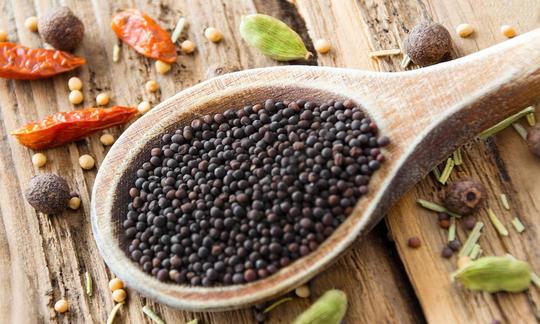

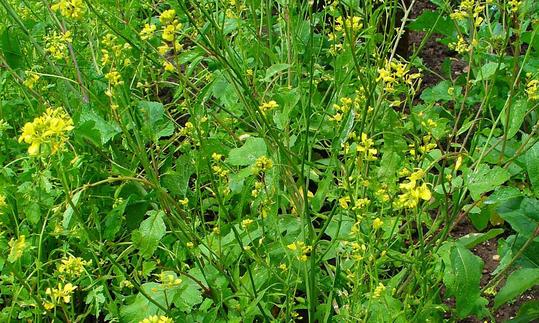

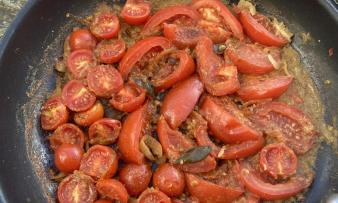
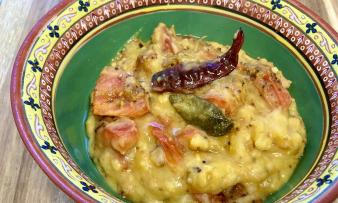
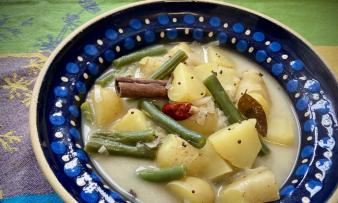

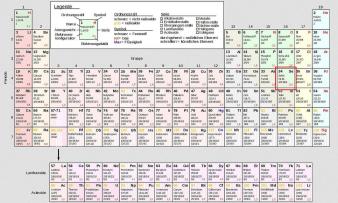



Comments